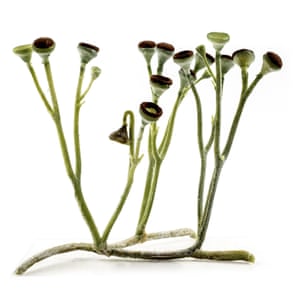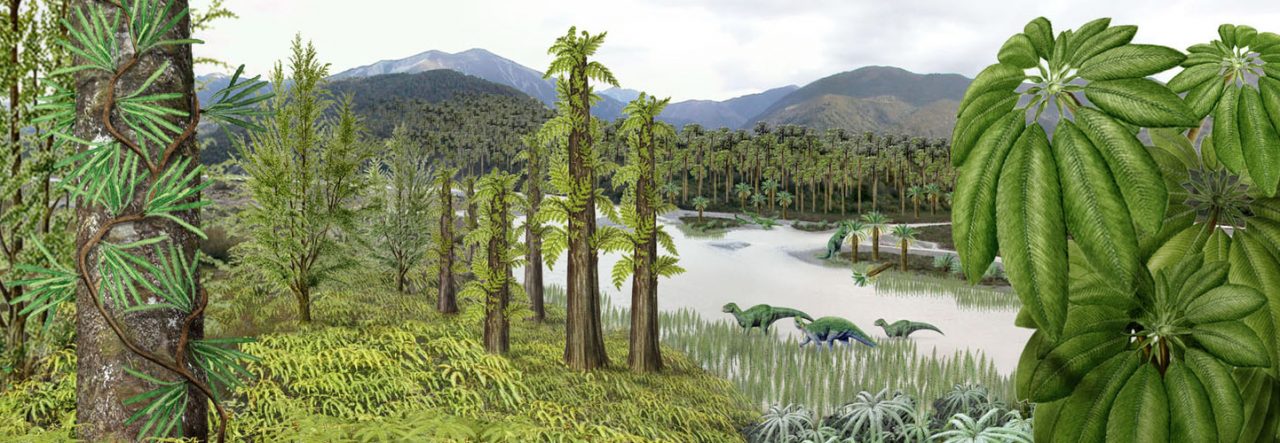Originally published at Lost Worlds Revisited for the Guardian Science Blog Network on 25 May 2018:
Fossils from 432m years ago push back the origin of the alternating life cycle still seen in ferns today
Our world today is dominated by the flowering plants, or angiosperms, which appeared approximately 130m years ago and rapidly diversified to become the top dogs in most ecosystems. But there are plenty of other plants from more ancient lineages still around, doing deeply weird things in their life cycles, and doing them for much longer than we have realised.
Flowering plants themselves are a refinement of a much earlier innovation about 375m years ago: the seed. Seeds provide protection and a source of nutrition for the embryo, and a handy means of dispersal. A seed germinates and then grows into another plant which is more or less the same as its parents. This is not how spore-producing plants like ferns do things.
The plant that you think of as a fern – a tallish, green structure with well-defined leaves and roots – is just one half of its life cycle. This plant is known as the sporophyte and, like us, it has two copies of its chromosomes (it is diploid). The sporophyte produces spores, which contain only a single copy of the chromosomes. These spores disperse, and grow into a separate plant, called the gametophyte (which is haploid, like the spores). This gametophyte plant looks completely different from the sporophyte phase: it is a small, flat, amorphous blob. It is the gametophyte that produces eggs and sperm, and as long as there is plenty of water about to allow the motile sperm to swim to the egg, fertilisation occurs. A new, diploid sporophyte grows from this fertilised egg, and the cycle begins again … This process is known as alternation of generations, and has, ironically, confused generations of biology undergraduates. Nobody expects to see motile sperm in a plant lecture.
In angiosperms and other seed plants, that gametophyte phase is still there, but is neatly bundled away inside organs on the sporophyte, and the sporophyte phase is the only bit you ever see externally. In ferns, the sporophyte phase is dominant, but the gametophyte is still hanging in there as an independent plant. If you look at modern plants which branched off even lower down in the plant evolutionary tree, such as mosses and liverworts, the situation is reversed. In liverworts like Marchantia, which lives in most soggy places worldwide, the gametophyte is the dominant phase – the thing you would think of as the plant. The sporophyte phase is completely dependent on its gametophyte for photosynthesis, and does not live as a separate plant. Does this mean that the sporophyte phase of the earliest land plants was equally dependent on its gametophyte?
A previous study had suggested a minimum size limit below which cooksonioid plants could not have functioned as photosynthetically independent plants. Cooksonia barrandei, with a stem diameter of more than a millimetre, is above this hypothesized size limit. As well as being the oldest known sporophyte, it may have also been fully independent of its gametophyte.

By around 30m years later, the plants preserved in the Rhynie Chert had unambiguous independent sporophyte and gametophyte forms, and alternation of generations was well established, without an obvious emphasis on either the gametophyte or the sporophyte. Cooksonia barrandei pushes the origins of this alternation of generations so much further back into the past that the commonly held assumption – that a gametophyte-dominant life cycle, as seen in modern liverworts, is ancestral – is being questioned. This new discovery allows the possibility that alternation of generations was established very early in, or even before, the evolution of earliest land plants. Approaches which combine evidence from the fossil record with developmental genetics might begin to explain just how this key switch, which led to the plants we rely on, was thrown so long ago.
